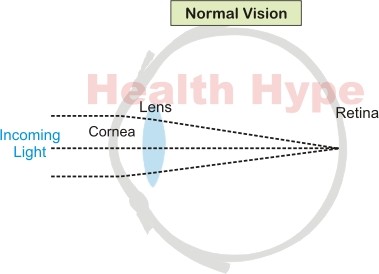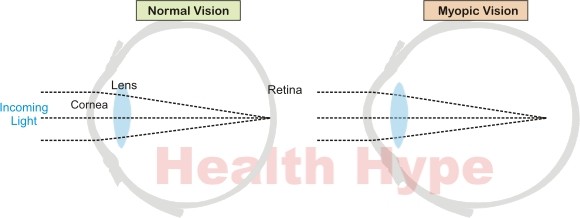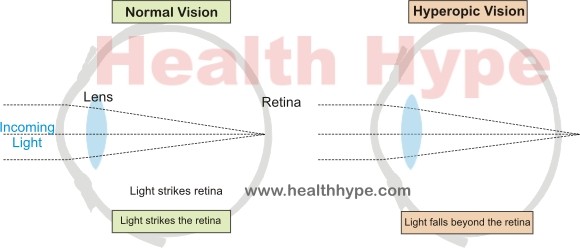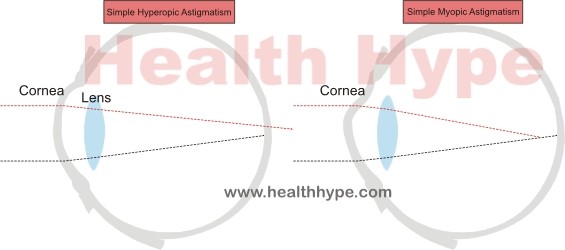Common Vision Problems Causes, Types, Symptoms, Treatment
Vision Problems Definitions
What is vision?
Vision is the ability to perceive the surrounding environment by interpreting the images cast by light on the eye. This is possible through the visual apparatus the eyeball, optic nerve and brain. The eyeball is responsible for focusing a sharp image and converting the light into nerve impulses. The optic nerve then carries these signals to the cerebral cortex. The brain then decodes these impulses into images – visual perception.
What is visual acuity?
Visual acuity is the clarity or sharpness of vision. Although the ability to see clearly varies slightly from person to person to some degree, and the visual apparatus attempts to maintain clear and sharp images, there is a point of reference established which is considered the norm among humans. This is sometimes referred to as 20/20 vision.
What are vision problems?
Vision problems or eyesight problems is a broad term used to describe any defect in the ability to see. It can refer to short sight, long sight, blurred vision, cloudy vision, double vision and other defects in the visual field like floaters, shadows, halos or flashing lights.
What are the common vision problems?
The most common vision problems are nearsightedness (myopia), farsightedness (hyperopia), astigmatism and presbyopia. These problems are due to an error in refraction – the way light is bent as it passes through the eyeball in order to cast a sharp image.
Vision Problems Meaning
There are several components that facilitate the sense of vision which is collectively known as the visual apparatus. Light enters the eyeball through the clear outer layer known as the cornea. It is a curved area that slightly protrudes out of the front of the eyeball. From here, the amount of light entering the eyeball can be controlled by the iris which can increase or decrease the size of the pupil – the black area at the middle of the eye.
Once inside the eyeball, the light travels through the lens which is an elastic clear crystalline structure. The light is then cast as sharp image on the retina, a multi-layered inner lining of the eyeball. The retina contains specialized nerves cells known as rods and cones. These cells respond to light stimuli thereby creating electrical impulses which travel by the way of the optic nerve to the brain. A central yellow area on the retina is known as the macula and within it lies the fovea which is an area with a high concentration of cones. This area is responsible for sharp vision.
Normal Vision
The key to visual acuity is the passage of light through a clear medium which can focus the light rays to cast a sharp image. Most common vision problems occur with focusing a sharp image. However, it is important to first understand how the visual apparatus functions to focus a sharp image in the healthy eye. Light rays have to be bent to different degrees in order to converge at a single spot known as the focal point. In the ideal situation this focal point should be fall perfectly on the most sensitive part of the retina known as the fovea.
In order to achieve this, the incoming light rays have to be bent (refraction). The cornea is responsible for most bending of incoming light. However, the curvature of the cornea is fixed and cannot accommodate for differences in distance. Light has to be bent more for clear vision of near objects and less for viewing distant objects. The changes in refraction to cast a sharp image on the fovea is known as accommodation and is achieved by the lens within the eyeball.
Once light is bent by the cornea, it passes through the pupil and then to the lens. Since the lens is elastic, it can change shape as needed. The lens is suspended within the eye by ligaments known as suspensory ligaments. It is attached to the ciliary muscles. The contraction and relaxation of the ciliary muscles therefore alter the shape of the lens. For nearer vision, the lens becomes fatter and rounder and for distant vision it remains thinner and flatter. This alters the focal point which should be focused on the fovea for visual clarity.
Refractive Errors
Common vision problems are mainly due to errors in refraction. The focal point either falls short of the retina or behind it. The lens attempts to accommodate but is unable to do so for long periods of in severe refractive errors. Since the sharpest image does not strike the fovea, the vision appears blurred. Despite the accommodative power of the lens, it is inadequate to form a sharp image on the fovea.
Common Vision Problems Causes
Refractive errors arise when the length of the eyeball is abnormal, either too short (farsightedness) or too long (nearsightedness) or when the cornea is uneven (astigmatism) or there is age-related changes of the lens (presbyopia). Some of the causes of these defects in the refractive index of the visual apparatus includes :
- Congenital defects – present from birth
- Familial tendencies
- Genetic diseases
- Diabetes mellitus
- Prolonged eyestrain
- Advancing age
Common Vision Problems Symptoms
The main symptom of common vision problems is a difficulty seeing objects clearly at certain distances. In nearsightedness, it is distant vision that is blurred while in farsightedness it is the near vision that is blurred. There may also be a difficulty seeing in dim light or in severe cases of conditions like astigmatism, there may be double vision.
Eyesight Problems Treatment
Refractive errors are easily treated with corrective lenses in the form of eyeglasses or contact lenses. The degree of the error has to properly assessed and the shortfall then made up for with lenses of different strengths. The power of the lens is equivalent to difference of refractive index, measured in diopters, to enable visual acuity. Surgery is also an option for different types of refractive errors of the eye. Most of these surgical procedures alter the refractive index of the cornea and include :
- Keratotomy or photorefractive keratectomy (PRK)
- Laser-assisted in situ keratomileusis (LASIK)
- Laser assisted sub-epithelium keratomileusis (LASEK)
- Thermal keratoplasty (TK) or laser thermal keratoplasty (LTK)
- Intrastromal corneal rings (ICR)
- Other corneal procedures
Some surgical procedures target the lens of the eye and includes :
- Extraction of clear lens
- Posterior chamber intraocular lens (IOL) implantation
- Anterior chamber IOL implantation
Corneal procedures, particularly laser eye correction procedures, are usually preferred over lens surgery.
Types of Vision Problems
There are four main types of common vision problems.
- Myopia (nearsightedness) where the focal point falls short of the fovea of the retina.
- Hyperopia (farsightedness) where the focal point falls behind the fovea of the retina.
- Astigmatism where the curvature of the cornea is uneven.
- Presbyopia where there is age related stiffening of the lens.
Nearsighted Vision
Nearsighted vision is where a person can see near objects clearly but far vision is blurred. It is known as myopia. Other common names include nearsightedness or short sight. It is one of the most common refractive errors of the eye. The light is bent to a degree where the focal point falls short of the retina and a sharp image cannot be cast on the fovea.
Nearsighted Causes
Myopia occurs when the eyeball is too long or the cornea is too curved. This may occur for various reasons but is strongly associated with a family history of myopia and visual stress. Myopia may also occur with long term diabetes mellitus.
Nearsighted Symptoms
The near vision is clear while the distant vision is blurred. The distance at which the eye can no longer maintain clear vision is known as the “far point” which can vary between people with myopia. Myopia tends to arise in childhood and progressively worsens at different rates until early adulthood where it stabilizes. However, ongoing visual strain in adulthood can worsen the condition. Myopia rarely starts in adulthood but can occur with conditions like diabetes mellitus.
Other symptoms are more prominent if the myopia is not corrected. This mainly presents as eyestrain symptoms – eye redness, tearing, burning of the eyes and headaches. Children may not be able to describe the eyesight problem accurately and it is therefore important to take note of changes in behavior, sudden learning difficulties and squinting. The fear of eye glasses and efforts to compensate may lead to various other features as described under myopia in children.
Nearsighted Treatment
The treatment for nearsightedness involves the use of corrective lenses either with eye glasses or contact lenses. The difference in refraction needed for clear vision is calculated in diopters. Corrective lenses can correct any degree of myopia. Refractive eye surgery for myopia may provide long lasting results but has its limitations. Procedures of choice for myopia include LASIK, ICR, PRK, radial keratotomy or lens extraction or implantation.
Farsighted Vision
Farsightedness is where a person can see distant objects clearly but near vision is blurred. It is known as hyperopia, hypermetropia or long sight. Light entering the eye is bent to a degree that causes the sharpest image to fall behind the eye. It is not as common as myopia or astigmatism.
Farsighted Causes
Hyperopia is a result of a short eyeball or where the cornea is not curved enough. It may also be causes by small eyes (micropthalmia), diabetes mellitus, retinal vascular diseases and cancer of the eye.
Farsighted Symptoms
Mild cases of hyperopia may not cause any noticeable change in vision although there may be symptoms of eyestrain. Once hyperopia becomes evident, a person will find difficulty in seeing near objects despite the far vision being clear. Eyestrain symptoms include eye pain, burning, redness of the eye, excessive tearing and headaches. With age, usually after 40, farsightedness sets in and even if a person had normal vision or was hyperopic but not symptomatic. This age-related farsighteness is known as hyperopia.
Farsighted Treatment
Hyperopia can be treated with corrective lenses with the use of eye glasses or contact lenses. The change in the refractive error that needs to be corrected in order to enable clear vision is measured in diopters. Any degree of hyperopia can be corrected with lenses but only low grade hyperopia can be surgically treated, usually limited to about 4 diopters. Refractive surgery for farsightedness includes procedures such as PRK, LASIK, LTK and TK.
Uneven Cornea
An uneven cornea can bend light to different degrees thereby disturbing the ability to cast a sharp image on the most sensitive part of the retina. This condition is known as astigmatism. It is the most common vision problem affecting about 9 out of 10 people but is often so minor that it remains undetected for life.
Uneven Cornea Causes
Astigmatism is a more complex refractive error than myopia or hyperopia. Some parts of the cornea may be too curved while others less so meaning that different planes of light are refracted to different degrees. This makes it difficult for the incoming rays of light to be bent (refracted) sufficiently enough to meet at the focal point. Whereas with other vision problems the lens tries to accommodate for this problem to some degree, it cannot alter the ability to refract different planes of light to different degrees at the same time. Some rays of light fall short of the most sensitive spot on the retina, while others fall behind it. These differences gives rise to the different types of astigmatism L
- Simple hyperopic astigmatism
- Simple myopic astigmatism
- Compound hyperopic astigmatism
- Compound myopic astigmatism
- Mixed astigmatism
Uneven Cornea Symptoms
The degree of vision symptoms depends on the severity of the astigmatism. In minor cases there may be no symptoms and a person may not even be aware of any problems with vision. Symptomatic cases of astigmatism may present as blurred vision, one-sided distortion of vision or even double vision. Eyestrain symptoms such eye pain or burning, headaches and light sensitivity may also be present.
Uneven Cornea Treatment
As with other common vision problems like myopia or hyperopia, corrective lenses can treat astigmatism. This may be used in the form of eyeglasses or contact lenses. Refractive eye surgery for astigmatism includes procedures like arcuate keratotomy, PRK, LASIK and lens surgery.
Elderly Vision Problems
The lens of the eye becomes stiff with age which then compromises its accommodative power. This presents as farsightedness which is known as presbyopia. Sometimes this can occur earlier in life, before the age of 40, in which case it is known as premature presbyopia.
Elderly Vision Problems Causes
The stiffness of the lens is an age related change and not related to any disease. After the age of 40 years, this change in the lens is unavoidable. Therefore every person will develop presbyopia to some degree or the other. Premature presbyopia is more common in a person with pre-existing farsightedness (hyperopia) or with excessive exposure to UV light including from sunlight.
Elderly Vision Symptoms
There is a difficulty to see near objects although distant vision is clear. The near vision may not be totally blurred initially but there may be some difficulty in reading small particularly in dim light. Gradually there is blurring of near vision with associated eyestrain symptoms like headaches.
Elderly Vision Problems Treatment
Presbyopia can be corrected with lenses either in the form of eyeglasses or contact lenses. Common surgical procedures of the eye that alter the curvature of the cornea are not effective as it is the accommodative power of the lens that is affected. Therefore surgical intervention would be in the form of lens surgery with removal of the existing natural lens and replacement with a new artificial lens. This procedure is known presbyopic lens exchange (PRESLEX).










